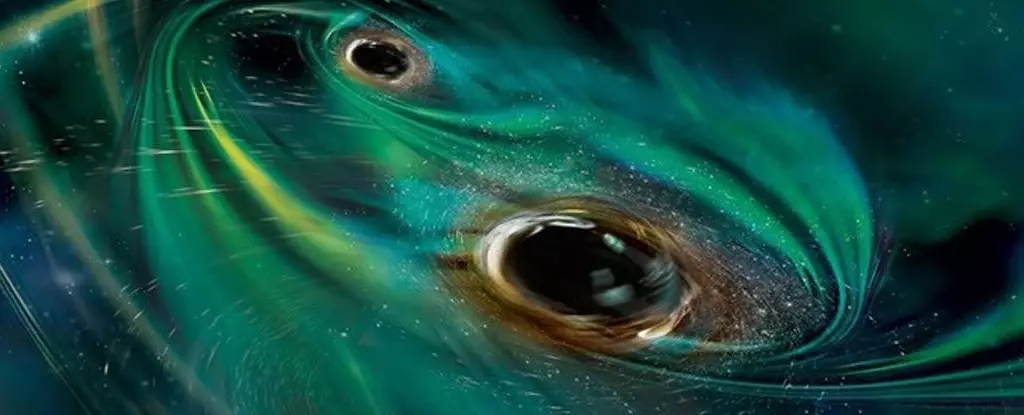In March 2021, the astronomical community was stirred by the discovery of an unusual high-energy burst of light emanating from a far-off galaxy. Initially categorized as a supernova, the event, named AT 2021hdr, soon revealed characteristics that hinted at something far more complex. The Automatic Learning for the Rapid Classification of Events (ALeRCE) system, designed to flag intriguing cosmic events, pointed to the need for deeper investigation. As subsequent observations unfolded in 2022, a pattern emerged, prompting astronomers to reevaluate their initial conclusions regarding its true nature.
The Zwicky Transient Facility (ZTF) became a pivotal player in monitoring AT 2021hdr. By tracking these energy bursts, researchers observed a compelling frequency of outbursts occurring every 60 to 90 days. This regularity raised questions about the source of the emissions. The most popular hypothesis, a tidal disruption event (TDE), typically features a star being torn apart by a black hole. However, the recurring nature of AT 2021hdr suggested that a TDE might not sufficiently explain the phenomenon we were observing.
Faced with the limitations of existing models, scientists explored new theories to elucidate the origins of AT 2021hdr. One particularly fascinating concept involved a binary black hole system. This model proposed that as a sizable interstellar cloud drifted into the gravitational grasp of two orbiting black holes, the interaction would not merely result in destruction but in a dynamic process of consumption. Through sophisticated computer simulations, researchers demonstrated that the binary black holes would disrupt the cloud, generating periodic light bursts as they continued their orbital dance.
To put the new hypothesis to the test, astronomers utilized the Neil Gehrels Swift Observatory to closely observe AT 2021hdr. The results were illuminating: they detected periodic oscillations in ultraviolet and X-ray emissions reminiscent of the transient bursts cataloged by the ZTF. Notably, these findings aligned perfectly with the predictions from the simulations of a binary black hole interaction, suggesting that the underlying model was increasingly robust. Further analyses estimated that the combined mass of the black holes involved was approximately 40 million times that of our Sun and that they completed an orbit around one another approximately every 130 days.
What makes this study particularly fascinating is its implication for the future of our understanding of cosmic phenomena. The ongoing observation of AT 2021hdr may not only refine our understanding of the black hole interactions at play but also shed light on their relationship with the surrounding galaxy. Analysts estimate that if the current trajectory persists, these two massive entities will eventually merge in approximately 70,000 years, an event that could have profound implications for the surrounding space environment. The tantalizing enigma of AT 2021hdr underscores the complexity and richness of our universe, reminding us that our celestial explorations are just beginning.


Leave a Reply